Rondash and rondachiers. From benefits to beauty
Second Chronicles 9:15
Weapons from museums. So, we again return to the topic of medieval armor, well, not medieval, so the Renaissance period for sure, because I need to distract myself from the topic of pistols and mortars smelling of gunpowder. Murder, of course, is disgusting in any form, but even the most bloodthirsty strong and skillful warrior with a sword will not be able to send 17 people to the next world at once with one blow, but a grapeshot shot from the era of the Napoleonic Wars could do it easily. So let's go back to the old days and get acquainted with what we have not yet met, namely the shields called rondash. This word means the European shield, which was used at first by horsemen, but at the end of the Middle Ages it turned out to be a characteristic weapon of the infantry. Well, it ended story during the Renaissance, when these shields acquired the functions of exclusively ceremonial weapons and even became ... interior details. By the way, regarding the illustrations of this material to us. we can say that it was extremely lucky, because a lot of rondas have come down to our time, and we can get an exhaustive picture of them and the skill of their manufacturers from exhibits not from one, but from several of the most famous museums in Europe and the United States, including the State Hermitage in St. Petersburg, which is interesting in itself!
Actually, the very first shields were just exactly round (since, most likely, they were woven from rods), and this form took root not only for centuries - for millennia. Round were Greek hoplons, plank "lindens of protection" - Viking shields. Who else did not wear them! The only difference in the design of the round shield was only one: whether it had a convex umbon in the middle or not. Sometimes there were more umbons - five: one in the middle and four more on the sides, which hid the fastenings of the straps for holding. They made such shields from linden boards, woven from willow twigs, and also made from bronze, copper, steel, boiled leather, and used bovine skin, buffalo and rhinoceros skin. And as soon as they were not decorated! Shields, even the simplest ones, over time became real works of art, and in the East, in India, Iran, Egypt and Turkey, by the end of the 50th century, relatively small (about XNUMX cm in diameter) convex shields made of metal (brass , bronze, iron), covered with engraving and carving. They defended well enough against edged weapons and even against the bullets of the first samples of primitive firearms.
On the Internet, there is a statement that the predecessor of the rondash is the fencing shield. But this cannot be in any way, because the same Italian fencing shield was narrow, had a length of 60 cm and only covered the hand. There was a spearhead that could be used during the fight. And this shield was small, and the rondash, firstly, was round, and secondly, rather large.
True, strange, fantastic-looking round shields of the 50th century with teeth around the circumference are known, which served as traps for enemy blades, equipped in addition with blades. Usually one blade was up to XNUMX cm long, so that it could be used for fencing, but besides it, there could be several more, including those with sawtooth blades. Not only that: the Italians and Spaniards, who invented such a deadly weapon, decided to use this shield for night attacks, so many of them had a round hole at the top edge, behind which was a secret lantern. The light of the lantern passed through this hole, which could also be opened and closed with a latch. The idea of installing a lantern on the shield, which is closed by a spring lid with a bolt, was especially fantastic. It was supposed to use this flashlight to blind the enemy at night, so that it was easier to "beat" him. In practice, the oil lamp would most likely go out as soon as the opponents entered into a duel, or the wearer of the shield doused himself with hot oil and set fire to his clothes. So this shield, most likely, was more dangerous for its owner than for a potential enemy. Although, of course, purely outwardly, he was frighteningly effective.
However, there is a point of view that such a shield is just a rondash, but only ... "trench". Von Winkler wrote about him like this:
But here then it is necessary to clarify that, in addition to such "trench rondashes", we meet in much larger quantities with rondashes in the form of ordinary metal shields 50-60 cm in diameter without any additional blades and lanterns, but very richly decorated with engraving and minting. There are less decorated and obviously more functional shields of this type, and there are shields that are distinguished by an exceptional richness of decoration. Obviously, they served different purposes, since their cost is simply not comparable.
It is known that under the name rodela they were widely used by the Spaniards during the Italian Wars in 1510-1520. and called them rodeleros ("shield-bearers"). Well, they were called rondachiers in France. It is also known that such shields were used by the conquistadors of Hernan Cortez during the conquest of Mexico. So, in 1520, 1000 of his soldiers out of 1300 conquistadors had just such shields, and they well protected their owners from Indian weapons. In 1521 he had 700 rodeleros and only 118 arquebusiers and crossbowmen.
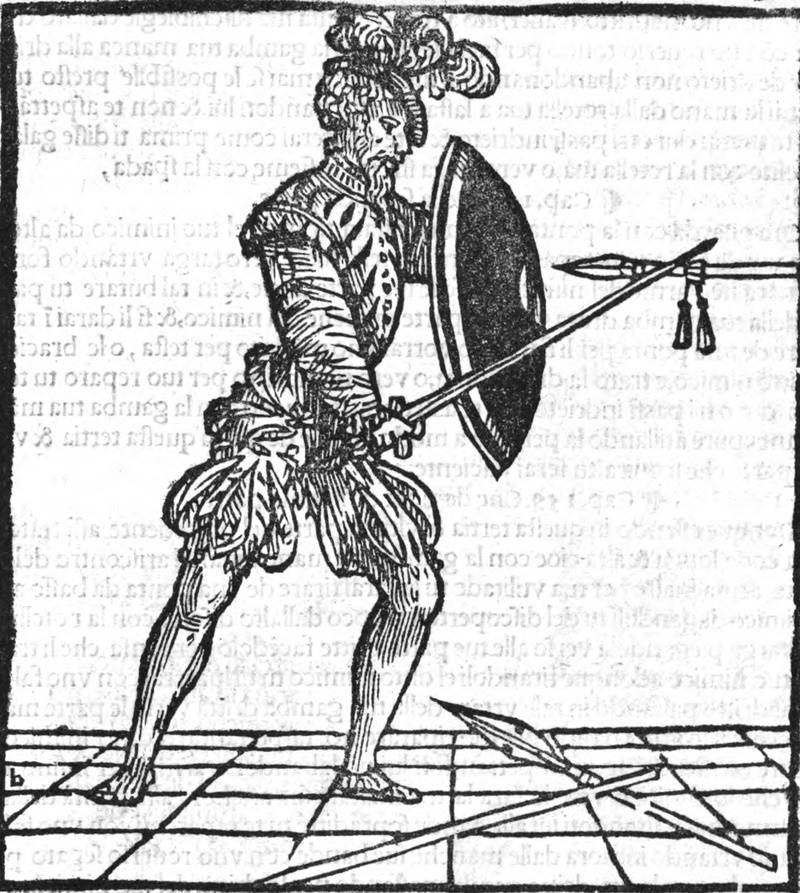
The reason for their appearance is simple: then on the battlefield the infantry consisted of spearmen and arquebusiers, and the former protected the latter while they were reloading their weapons. It was necessary to somehow break through their formation, for which the Swiss began to use halberdists, the Germans - Landsknechts with two-handed Zweichender swords, and the Spaniards - Rodeleros, armed with a sword and a strong shield, with which a fighter could not be afraid of either sharp peaks or arquebus shots ...
Nevertheless, their use in battles showed that they were vulnerable to cavalry attacks, and pikemen, if they were well trained and kept the formation, were a tough nut to crack for them. As a result, the rodeleros began to be used as part of the Spanish thirds, and not in the form of separate units, which required very good training both from them and from the pikemen and arquebusiers who were part of it!
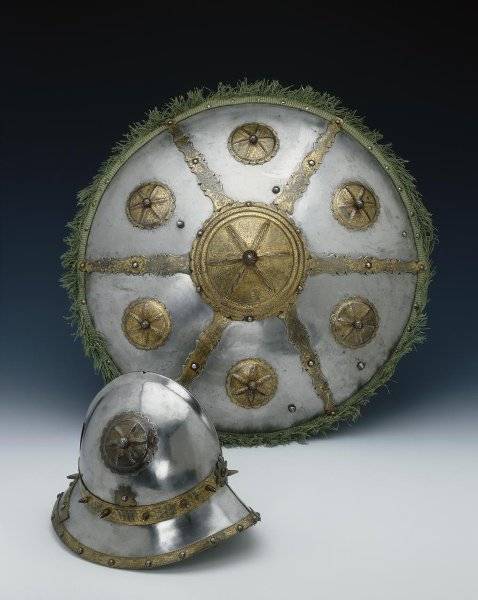
And then even the Spaniards refused them, since it turned out to be unprofitable to keep two soldiers armed with melee weapons and only one shooter in the ranks. True, Moritz of Orange tried to arm the front ranks of his troops with swords and shields in addition to the pike, hoping to protect his troops from being shot by enemy musketeers, but nothing good came of it. The shields protecting against the musket bullets were too heavy.
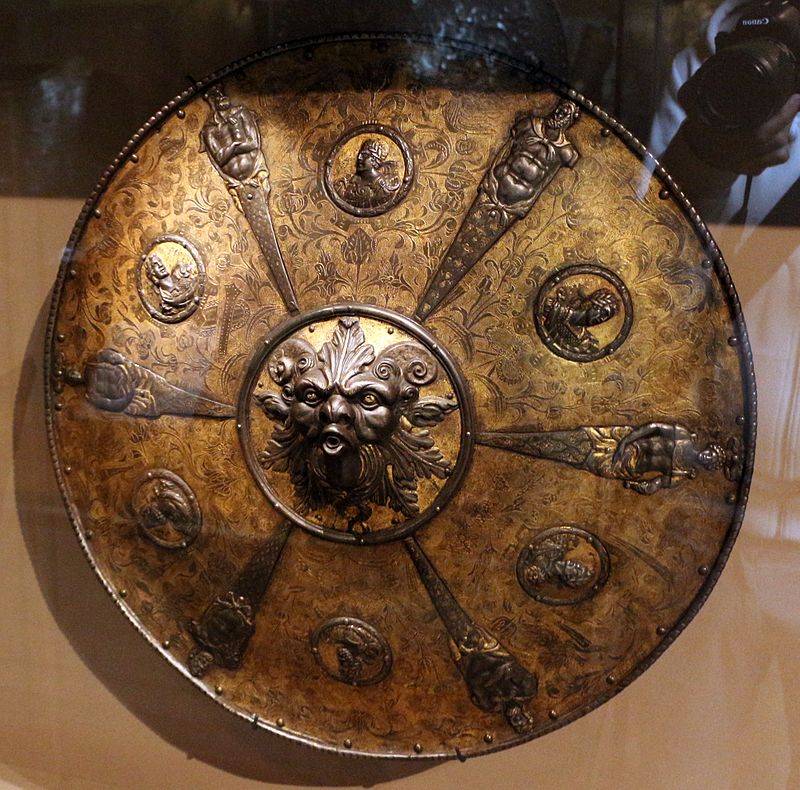
But as elements of ceremonial knightly weapons, rondashi shields were in demand for a long time. In the materials on "VO", dedicated to the theme of knightly weapons, it was emphasized that at a certain point in time the armor turned into a kind of court costume. They were worn, but only to show that you are a worthy heir to your ancestors and can afford to have this "metal clothes", and even dress in it, following the fashion. And it is clear that armor without a shield (this despite the fact that plate cavalry did not use shields in the same XNUMXth century!) Was perceived as ... unfinished, well, as a fashionably dressed woman is perceived today, but without an appropriate handbag.
Moreover, the large and even surface of the rondash in the literal sense of the word untied the hands of the gunsmiths. Now they could depict whole chased or carved metal paintings on shields, and when it suddenly became fashionable to paint the surface of the armor with paints, then the rondash turned out to be quite in place! It got to the point that, trying to please their rich and demanding customers, the craftsmen painted their products on both sides!
As already noted, many rondashi were designed as a real painting, only made in metal. Moreover, they used technologies such as metal chasing, carving, blackening, bluing, gilding, inlaid with non-ferrous metal and even chemical staining. The details of the shield were usually gilded by blacksmithing with the help of mercury amalgam, which, of course, did not add to the health of the craftsmen who used this technique.
PS The administration of the site and the author of the material would like to thank the Deputy Director General of the State Hermitage, Chief Curator S. B. Adaksina and T. I. Kireeva (Publications Department) for permission to use photographic materials from the State Hermitage's website and for assistance in working with illustrative photographic materials.
To be continued ...
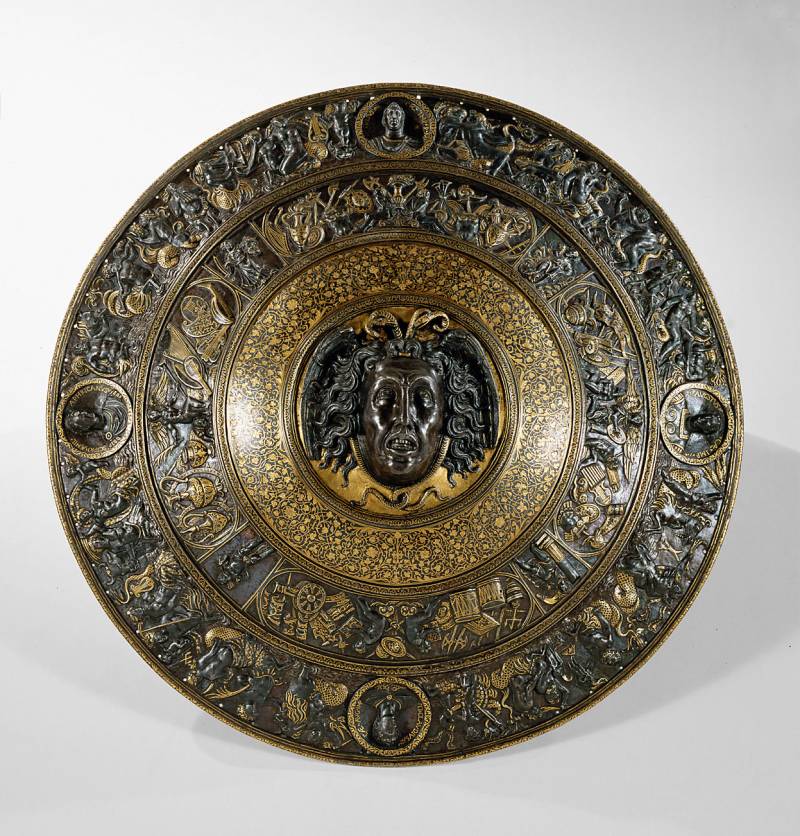
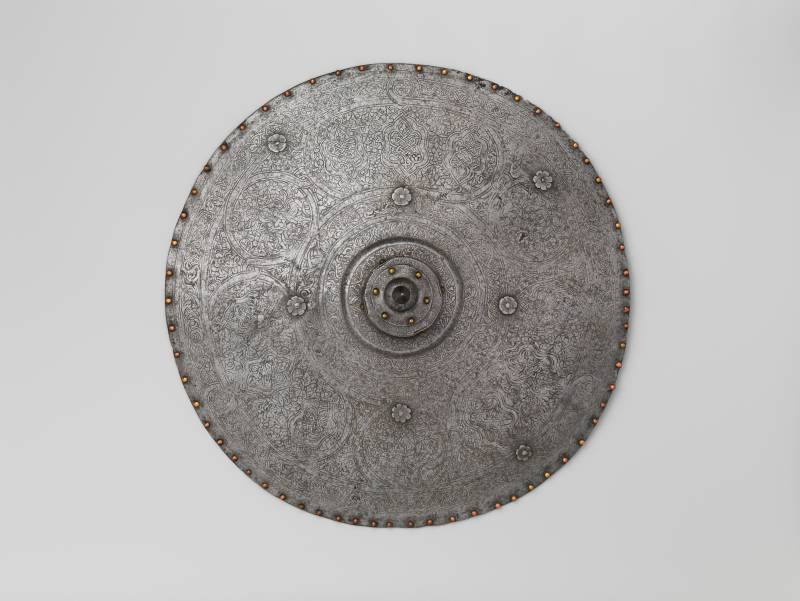
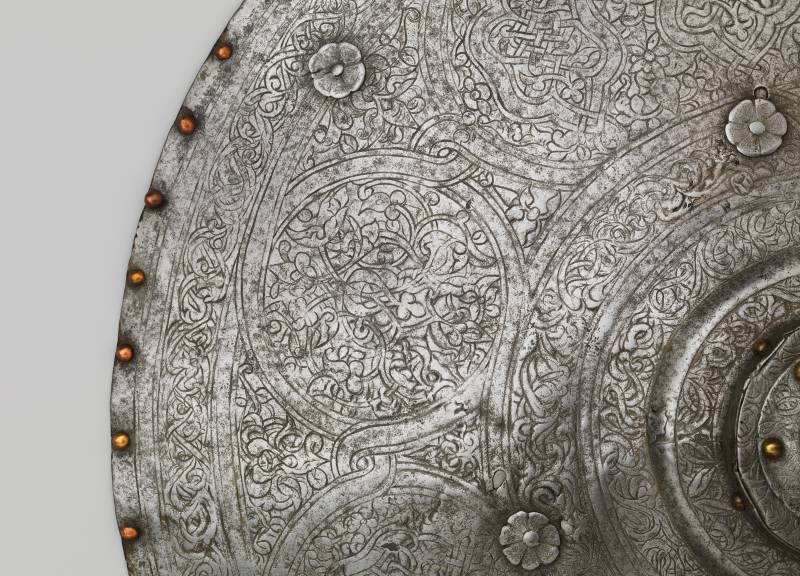
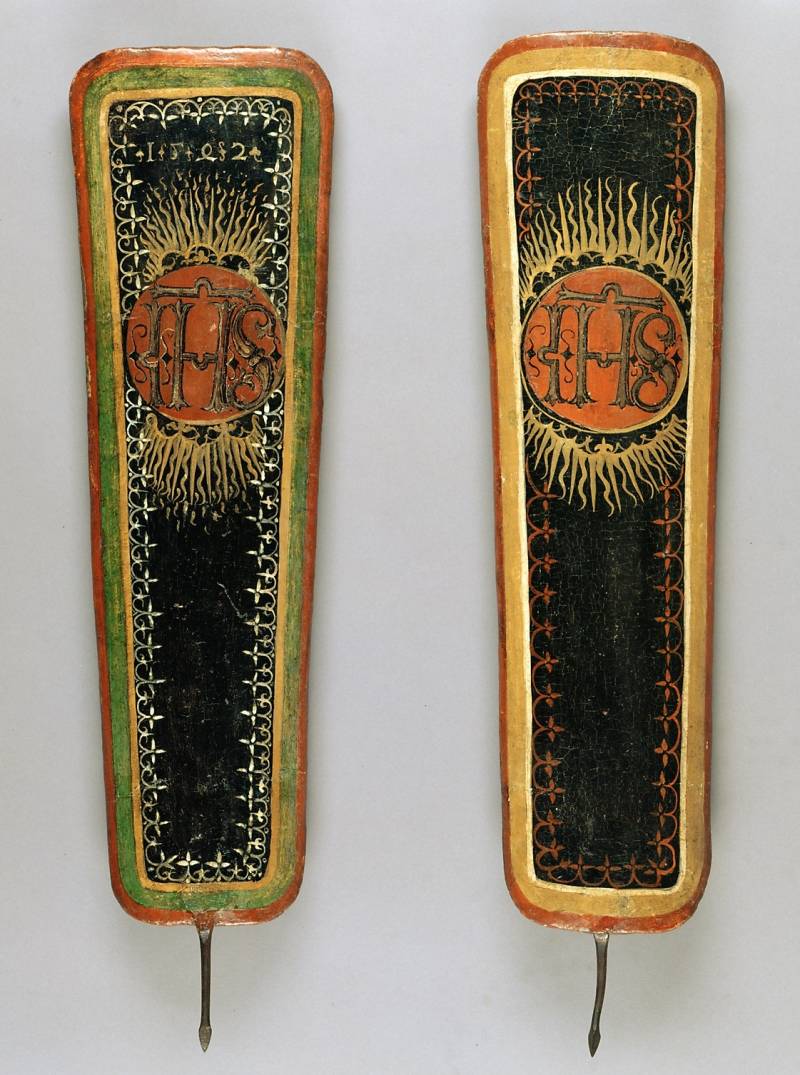
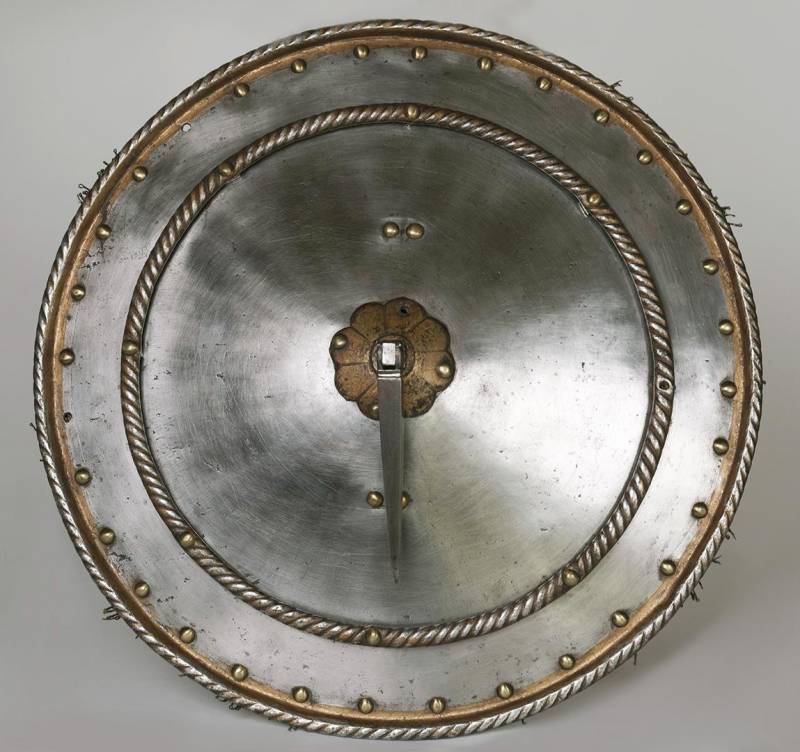
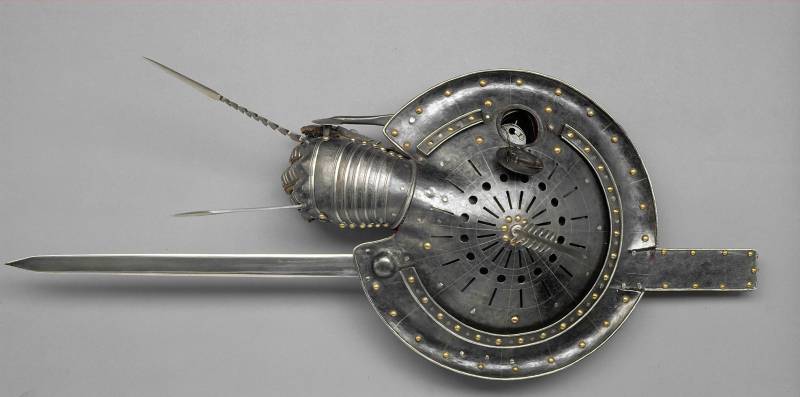
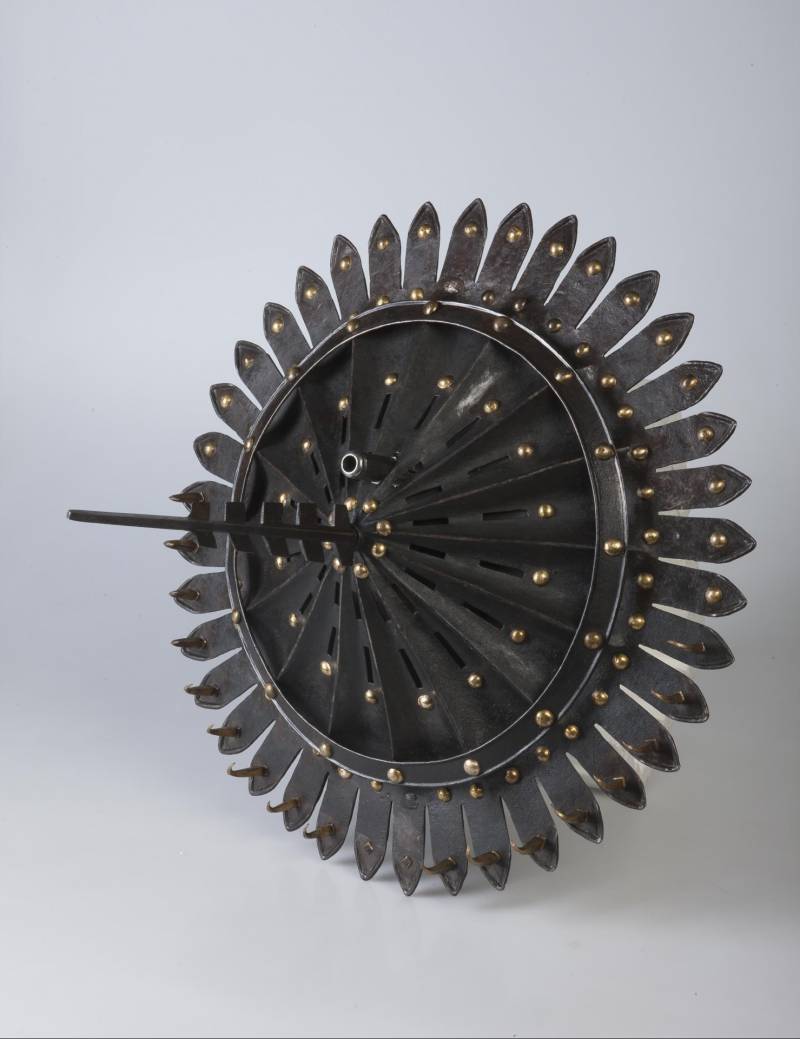
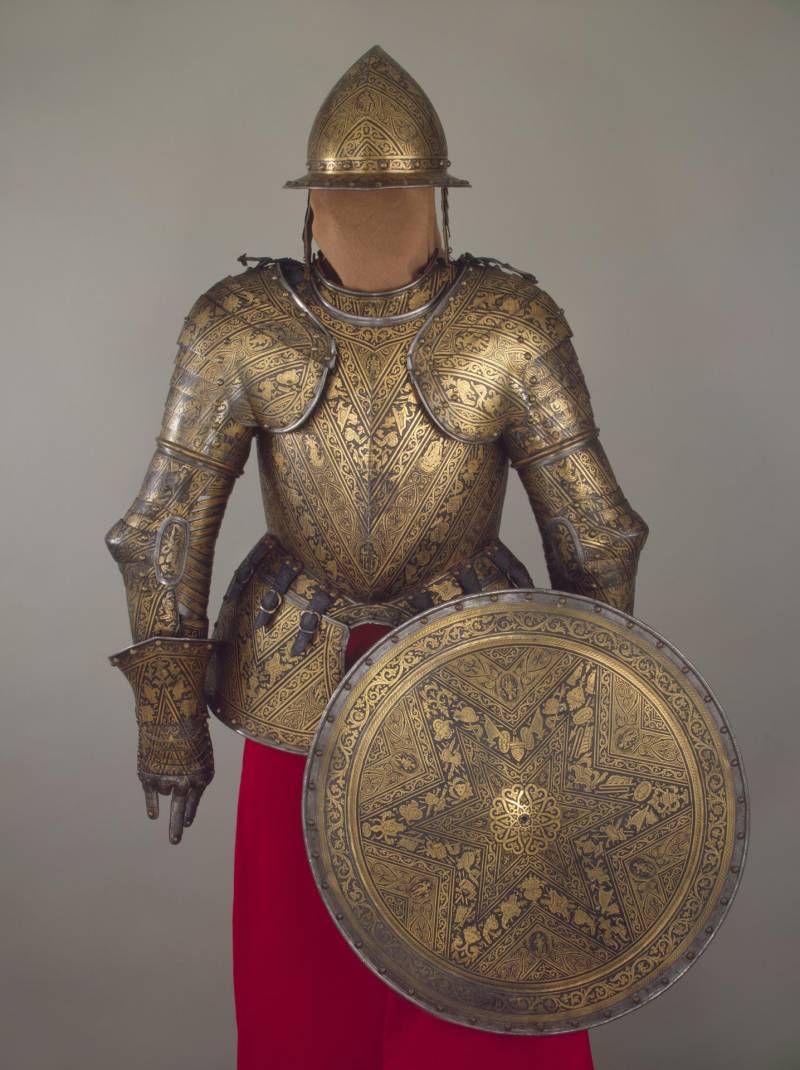
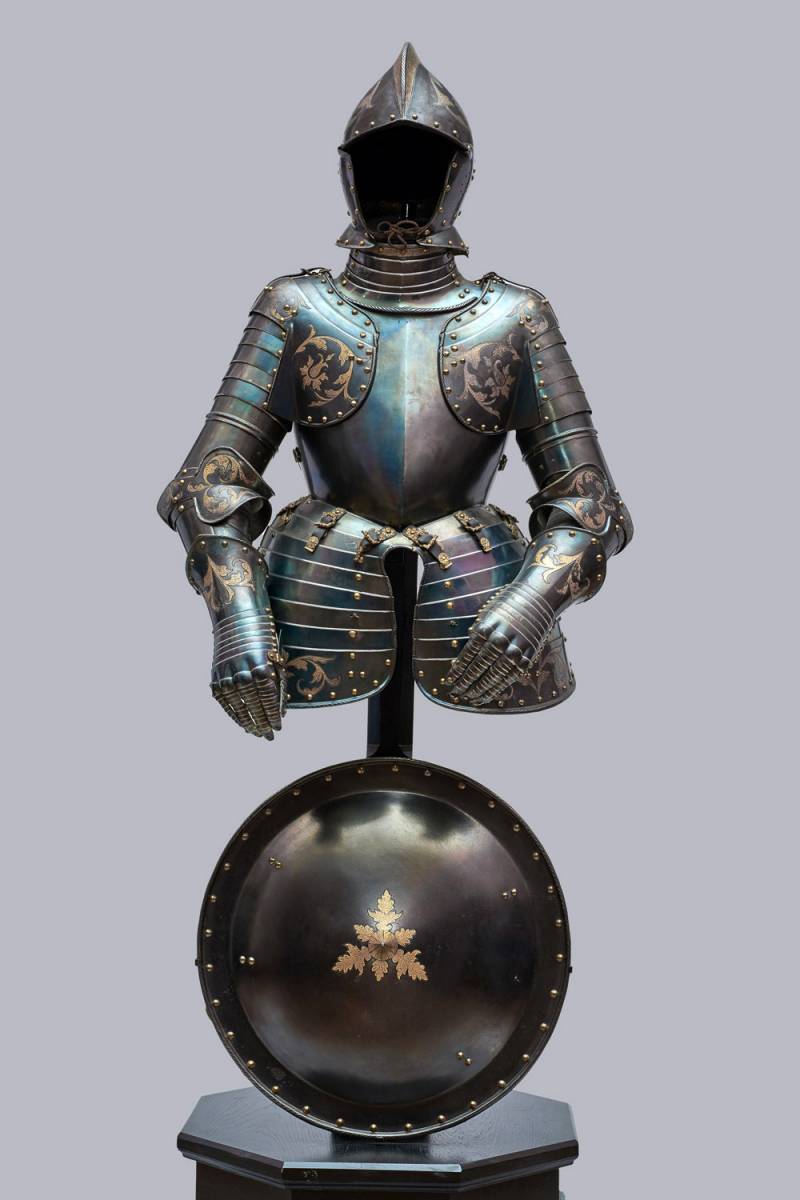
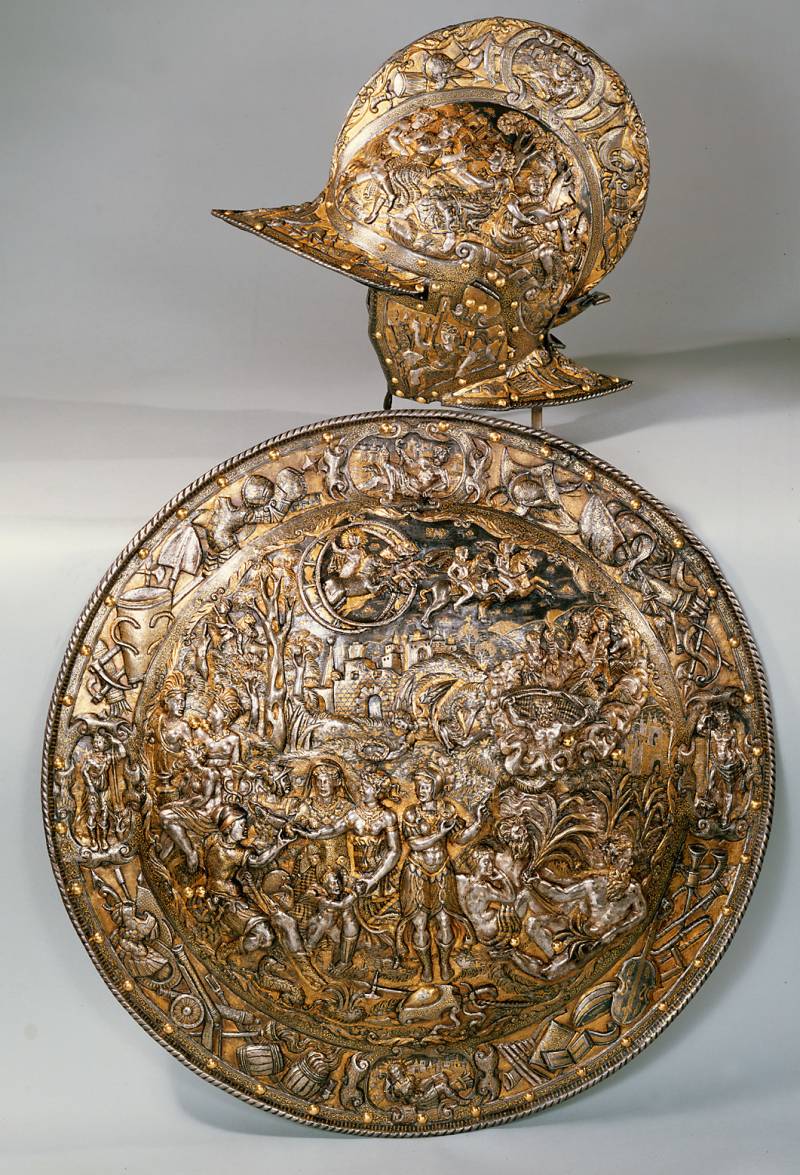
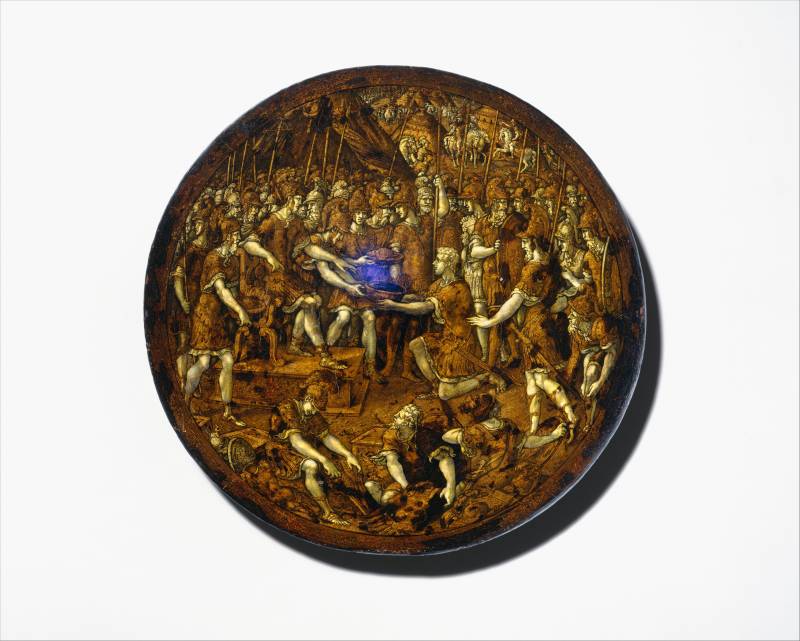
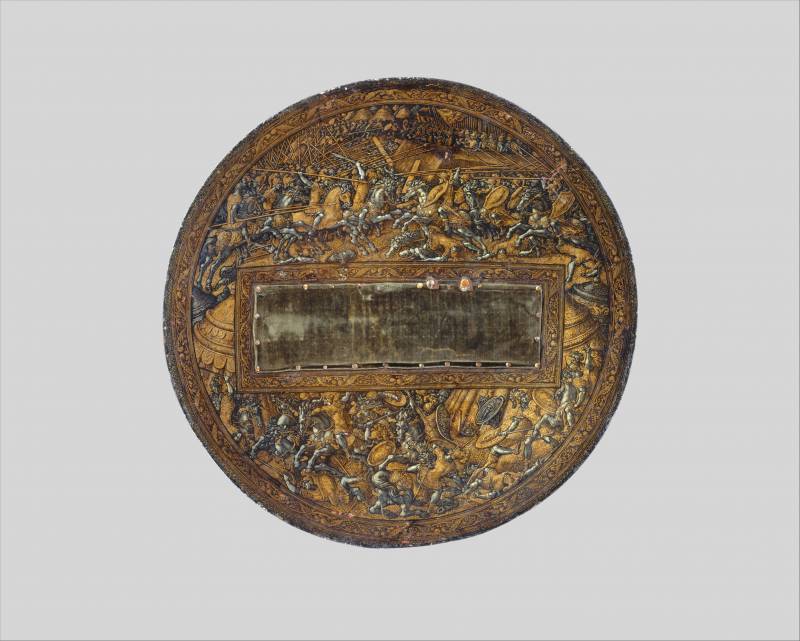
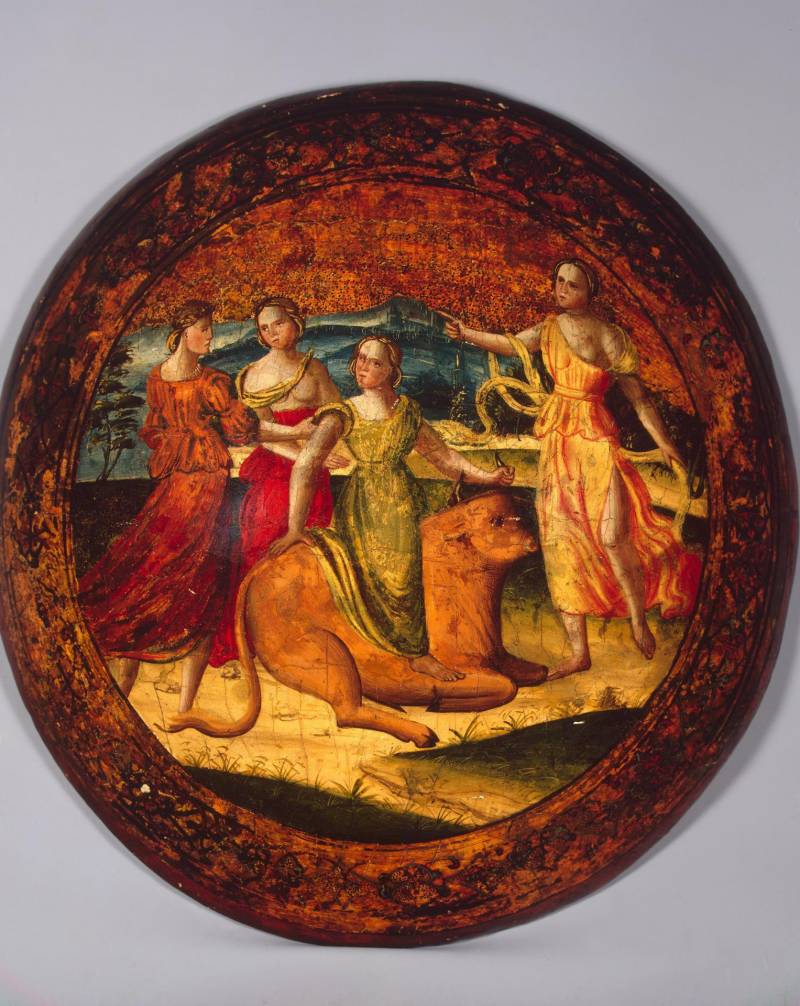
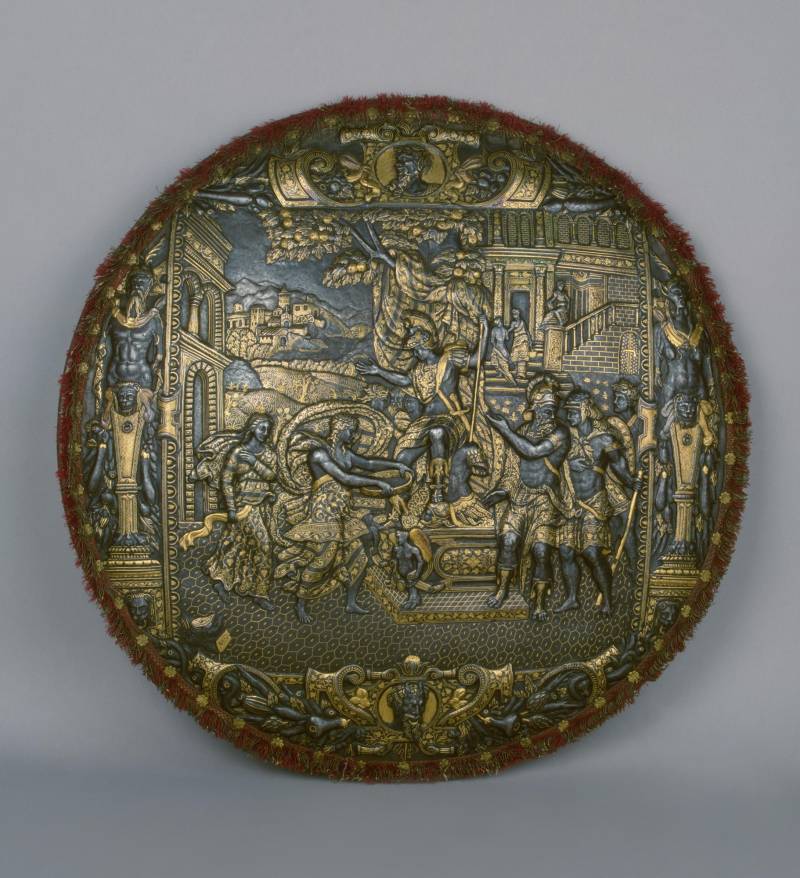
Information